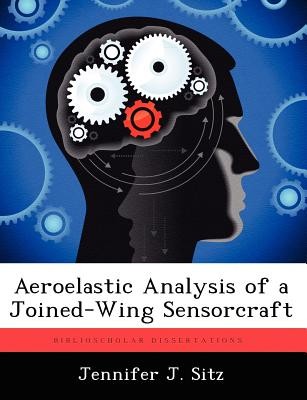
- We will send in 10–14 business days.
- Author: Jennifer J Sitz
- Publisher: BiblioScholar
- ISBN-10: 1249587506
- ISBN-13: 9781249587507
- Format: 18.9 x 24.6 x 0.5 cm, softcover
- Language: English
- SAVE -10% with code: EXTRA
Aeroelastic Analysis of a Joined-Wing Sensorcraft (e-book) (used book) | bookbook.eu
Reviews
Description
This study performed an aeroelastic analysis of a joined-wing SensorCraft. The analysis was completed using an aluminum structural model that was splined to an aerodynamic panel model. The force and pressure distributions were examined for the four aerodynamic panels: aft wing, fore wing, joint, and outboard tip. Both distributions provide the expected results (elliptical distribution), with the exception of the fore wing. The fore wing appears to be affected by interference with the joint. The use of control surfaces for lift and roll was analyzed. Control surfaces were effective throughout most of the flight profile, but may not be usable due to radar requirements. The aft wing was examined for use in trimming the vehicle. Also, two gust conditions were examined. In one model, the wing twist was simulated using a series of scheduled control surfaces. Trim results (angle of attack and twist angle) were compared to those of previous studies, including gust conditions. The results are relatively consistent with those calculated in previous studies, with variations due to differences in the aerodynamic modeling. To examine a more physically accurate representation of aft wing twist, it was also modeled by twisting the wing at the root. The twist was then carried through the aft wing by the structure. Trim results were again compared to previous studies. While consistent for angle of attack results, the aft wing twist deflection remained relatively constant throughout the flight profile and requires further study.
EXTRA 10 % discount with code: EXTRA
The promotion ends in 19d.10:06:33
The discount code is valid when purchasing from 10 €. Discounts do not stack.
- Author: Jennifer J Sitz
- Publisher: BiblioScholar
- ISBN-10: 1249587506
- ISBN-13: 9781249587507
- Format: 18.9 x 24.6 x 0.5 cm, softcover
- Language: English English
This study performed an aeroelastic analysis of a joined-wing SensorCraft. The analysis was completed using an aluminum structural model that was splined to an aerodynamic panel model. The force and pressure distributions were examined for the four aerodynamic panels: aft wing, fore wing, joint, and outboard tip. Both distributions provide the expected results (elliptical distribution), with the exception of the fore wing. The fore wing appears to be affected by interference with the joint. The use of control surfaces for lift and roll was analyzed. Control surfaces were effective throughout most of the flight profile, but may not be usable due to radar requirements. The aft wing was examined for use in trimming the vehicle. Also, two gust conditions were examined. In one model, the wing twist was simulated using a series of scheduled control surfaces. Trim results (angle of attack and twist angle) were compared to those of previous studies, including gust conditions. The results are relatively consistent with those calculated in previous studies, with variations due to differences in the aerodynamic modeling. To examine a more physically accurate representation of aft wing twist, it was also modeled by twisting the wing at the root. The twist was then carried through the aft wing by the structure. Trim results were again compared to previous studies. While consistent for angle of attack results, the aft wing twist deflection remained relatively constant throughout the flight profile and requires further study.


Reviews